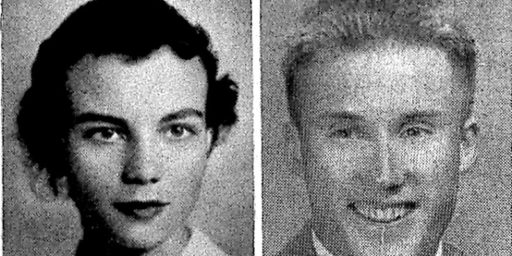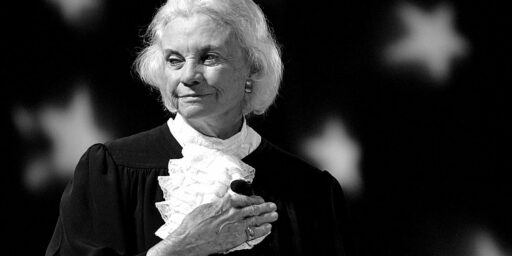Sadness and Uncertainty at Supreme Court
Linda Greenhouse reminds us the judges are people, too.
Supreme Court Memo: Life at the Court Proceeds, but With Sadness and Uncertainty (NYT)
[A]s it has become evident that Chief Justice Rehnquist will not be returning soon, a sense of sadness and uncertainty has spread throughout the court and into the wider community of federal judges who have received no more information than the general public about the chief justice’s condition and prospects.
Judges have refrained from calling either Chief Justice Rehnquist or Ms. Rider. “I don’t have the nerve,” one judge who has worked closely with the chief justice said Friday. “The vibes I get just aren’t good.” A judge who did call the chief justice’s chambers in anticipation of a visit to Washington was steered away from visiting his home in Arlington, Va. The justices have sent notes, but it is not clear whether any have seen or even talked to him. Information from official channels has been minimal. The court’s press office would not say whether the chief justice was present for the justices’ regular Friday morning conference, at which they review new cases and decide which to grant. (He was not.) Nor would the press office say whether, if he did not attend, he sent in his votes. (He did.)
The chief justice, it appears, has functioned as his own press officer. Surely a professional would have cautioned him, on the day it was announced that he had just undergone a tracheotomy, against making a public promise to be back at work in a week. Every cancer specialist whom reporters consulted after the announcement found that prediction highly implausible. And when the chief justice found on Monday that he could not fulfill the promise, he subtly but unmistakably indicated that the error had been his own and not his doctors’: “According to my doctors, my plan to return to the office today was too optimistic.”
Chief Justice Rehnquist’s statement on Monday said that he was receiving radiation and chemotherapy on an outpatient basis. Both the aggressive treatment and the observations of those who have seen him in recent weeks suggest that the disease is advanced and rapidly progressing. A judge who attended a meeting with him in late September said the chief justice looked well and spoke without the hoarseness that was apparent by the time the court’s new term began Oct. 4; a spreading thyroid tumor can impinge on the nerves that control the vocal cords. By mid-October, one court employee who saw the chief justice in his street clothes was struck by his frailty. “That robe can hide a lot,” this employee said.
Indeed. As we all ponder the political implications Chief Justice’s impending departure from the Court, we should keep in mind that there is indeed a man inside the robe. Whether one agrees with his judicial philosophy, there is almost universal agreement that he had been a superb administration of our federal court system. More importantly, he’s been a decent human being who has dedicated his life to serving the country.





Indeed. I recently read Rehnquist’s history of the court, and was struck by his respect for those who occupied the court before him. It seems we outside the court tend to make these people out to be demons which they are usually not.